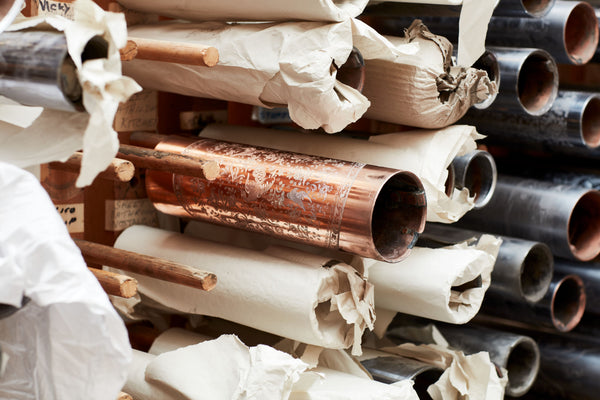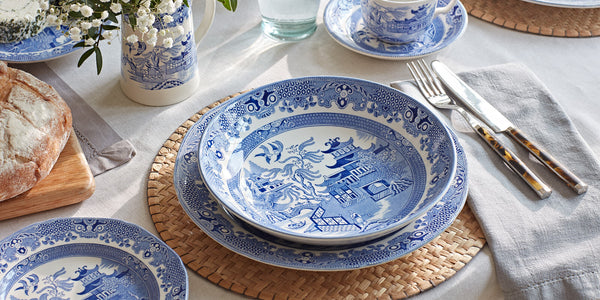
Have you ever heard of the ‘Matchings’ period? We’re not referring to matching teacups and saucers, or your matching Calico dinner set but a period of time when potters came together to print the same patterns of ware from different pot banks in and around Stoke-on-Trent.
What Is The Matchings Period?
"Matchings: the practice of completing part orders for a customer, where the Staffordshire Earthenware manufacturers specialising in ‘Underglaze Tissue Transfer Printing’ worked together to meet unpredictable demands."
In times gone by, it was common practise for a distributor or exporter to come to a variety of manufacturers to obtain quantities of ware, that no one factory could easily produce. This was helpful to both parties, the purchaser was spreading his chances of getting a complete order, in what was a volatile market, with factories closing and opening regularly. The customer had little knowledge of individual manufacturers and cared more for the quality and that it was ‘Staffordshire made’.
Matchings for Burgess & Leigh (Burleigh as we're known today) helped to build the business and it was commonplace within the industry during this period. This practice meant that a number of patterns were produced in a wide variety of locations across the Stoke-on-Trent area. Copperplates would be shared between different factories or multiple copies would be created by independent engravers to allow the same pattern to be produced by various pot banks, to complete the order; many of which were shipped all over the world.

By the 1870’s, Burgess & Leigh had made great progress in brand building, backstamps and markings underneath pieces of ware carried the name prominently and it is in fact the same backstamps that are still used today. By this point, a pattern like Asiatic Pheasants had spread to well over 60 factories. Patterns such as Willow had proliferated to almost every factory in the city, each making slight alterations to the layout or general design, to create a unique version as competition increased. Each factory would want to create the most eye-catching version of a pattern and as time moved on, these variations were sometimes extremely small and subtle, as in the case of Asiatic Pheasants or quite extreme as in the case of Willow.

As many pot banks faced challenges and consequently closed, Burleigh overcame economic pressures and changes in consumer demand and we still produce Willow today, relaunched from our archives in 2024. Several factories produce their own versions, each using different techniques and a slightly different design, each coming from the same period.

We however remain the only supplier with hand-applied tissue transfers and a final product that is 100% made in Staffordshire, England. Burleigh remains the only pottery in the world to decorate tableware using the tissue transfer method, where the best of British ceramic design and craft manufacturing is protected and celebrated. We’ve been proudly making earthenware since 1851, based at Middleport Pottery in Stoke-on-Trent since 1889.
#BurleighPottery
